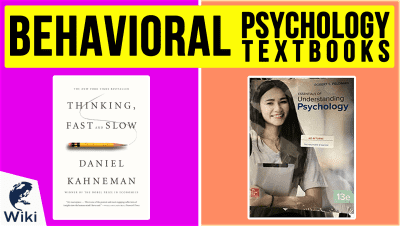9 Must-Read Books For People Who Love Space
Stargazing is an age-old tradition for a reason: space is beautiful and fascinating. And since the dawn of the Space Age, we've been discovering new facts about the universe around us every year, but we still have a lot to learn. If you're ready to boldly explore the depths of space, check out these nine books. Whether you're a fan of science fiction or non-fiction, there's something on this list that will interest you. When you click links from this website, we may receive advertising revenue to support our research. This video was made with Ezvid Wikimaker.
9 Must-Read Books For People Who Love Space
| Title | Author | Type | More by the Author | |
|---|---|---|---|---|
| 1. | See You in the Cosmos | Jack Cheng | Novel | These Days |
| 2. | Endurance | Scott Kelly | Memoir | My Journey to the Stars |
| 3. | The Space Between the Stars | Anne Corlett | Novel | Bristol Short Story Prize Anthology: Vol 6 |
| 4. | Rogue One | Alexander Freed | Film Novelization | Alphabet Squadron |
| 5. | Rise of the Rocket Girls | Nathalia Holt | Nonfiction | Cured |
| 6. | Conservation of Shadows | Yoon Ha Lee | Short Stories | Ninefox Gambit |
| 7. | Spindrift | Allen Steele | Novel | Galaxy Blues |
| 8. | The Comet Seekers | Helen Sedgwick | Novel | The Growing Season |
| 9. | Rocket Men | Robert Kurson | Nonfiction | Shadow Divers |
10 Great Space Films
- Hidden Figures (2016)
- Rogue One (2016)
- 2001: A Space Odyssey (1968)
- Alien (1979)
- Contact (1997)
- Apollo 13 (1995)
- Interstellar (2014)
- Star Trek (2009)
- October Sky (1999)
- The Martian (2015)
Neil deGrasse Tyson on the Future of Space Travel
In Depth
For thousands of years, mankind has looked up into the sky and wondered about the things beyond the clouds. In the 20th century, technology made it possible for humans to scratch the surface of the mysteries outside Earth, but there are still a lot of unanswered questions about the cosmos.
Whether you want to learn real facts about the universe, or read novels that deal with the subject, these nine books will cater to your hunger for space adventure. Note that our list consists of both fiction and nonfiction, and is presented in no particular order.
At #1 is "See You in the Cosmos." Written as a transcript of recordings, Jack Cheng's debut novel tells the story of eleven-year-old Alex, who plans to launch his iPod to space so he can follow in the footsteps of his idol, Carl Sagan, a real-life astronomer who Alex named his dog after. Together with his pet, he travels from Colorado to New Mexico for a rocket festival, while recording his journey on his iPod to show extraterrestrial listeners what life on earth is like. Full of optimism, innocence, and wonder, the book makes an excellent read for both middle grade students and those who are young at heart.
Written as a transcript of recordings, Jack Cheng's debut novel tells the story of eleven-year-old Alex, who plans to launch his iPod to space so he can follow in the footsteps of his idol, Carl Sagan, a real-life astronomer who Alex named his dog after.
At #2 is "Endurance: My Year in Space, A Lifetime of Discovery." Scott Kelly, a veteran astronaut who is well-known for spending nearly a year in space, shares an inspiring memoir about his experiences. He gives readers an in-depth look at the challenges of long-term space flight and its effects on the human body, unveils his worries about what's happening down on earth, and gives us a sense of what his life was like inside the ISS.
Coming in at #3 is "The Space Between the Stars," a thought-provoking novel by Anne Corlett. It follows the life of Jamie Allenby, who willingly leaves earth to seek time away from her long-time partner after a miscarriage shattered their relationship. However, when an interplanetary virus turns most of humanity into dust, Jamie finds herself journeying with other survivors back to Earth, hoping that her estranged boyfriend is still alive. Corlett features realistic characters as she depicts human flaws, beliefs, and devastation in this tale about survival and self-discovery.
At #4 is "Rogue One: A Star Wars Story," which is a novelization of the 2016 movie of the same name. It tells the story of Jyn Erso, a soldier and former criminal who helps steal the Death Star plans during a deadly battle. The book elaborates on the tale with distinct viewpoints from each main character, explaining their motivations, insights, and personal backgrounds. With Alexander Freed's descriptive writing, it also includes further details regarding the creation of the Death Star, making it an informative and interesting read for Star Wars fans.
The book elaborates on the tale with distinct viewpoints from each main character, explaining their motivations, insights, and personal backgrounds.
Next, at #5 is "Rise of the Rocket Girls." Nathalia Holt chronicles the development of America's space program by revealing the significant role of the young women who staffed the early days of the Jet Propulsion Laboratory. This historical narrative follows the story of the female mathematicians, known as "human computers," who were tasked with computing velocities and plot trajectories for rocket designs using only pencils and graph papers.
At #6 is "Conservation of Shadows," a critically acclaimed short story collection by Yoon Ha Lee. Consisting of sixteen tales, the book combines science fiction and Asian mythology, depicting the author's Korean-American heritage. The stories tackle different subjects such as colonization, the role of art, and the importance of language. Most of the narratives are either set in space or contain elements of space exploration. With his poetic writing, Lee aims to blur the line between science and fantasy through the use of cultural symbolism.
At #7 is "Spindrift," which is a follow-up to Allen Steele's Coyote Trilogy, but can also be read as a stand-alone novel. The story begins with the three astronauts who were sent to investigate a strange alien signal, finally returning to Earth after being missing for more than fifty years.
The story begins with the three astronauts who were sent to investigate a strange alien signal, finally returning to Earth after being missing for more than fifty years.
It focuses on the events in their ill-fated mission, their discoveries regarding the alien artifact, and how they are able to save themselves from endless isolation. The tale engages readers with the classic elements of Steele's original series, such as political manipulation, social tension, and intergalactic travel.
Next up, at #8 is "The Comet Seekers." Physicist Helen Sedgwick gives us a century-spanning novel. It follows the lives of Roisin, an Irish astronomer working in Antarctica, and Francois, a French chef at their base. The novel describes their past struggles, unfolding each of their family histories such as Roisin's illicit relationship with her cousin, and Francois' dying mother's ability to see ancestral ghosts. Sedgwick weaves science with supernatural elements and human desires in a story that revolves around the appearance of comets in the sky.
Finally, at #9 is "Rocket Men," a highly readable account of the Apollo 8 mission in 1968. Robert Kurson paints a picture of NASA's riskiest project, which sent the first manned spacecraft to the Moon in an attempt to beat the Russians in space exploration. The book follows the bravery of three extraordinary astronauts: Frank Borman, Jim Lovell, and Bill Anders, as it describes their hopes and fears. Kurson also presents complicated science in an easy-to-understand way, and delves into the astronauts' personal lives by telling the stories of the families.
















